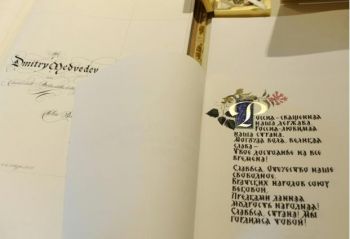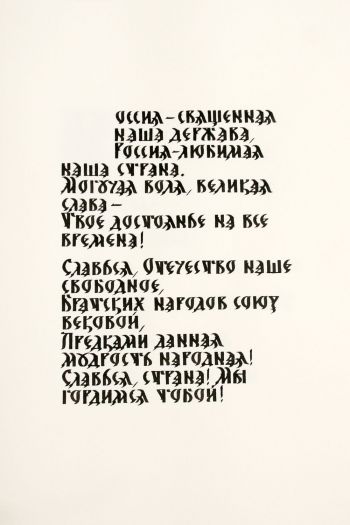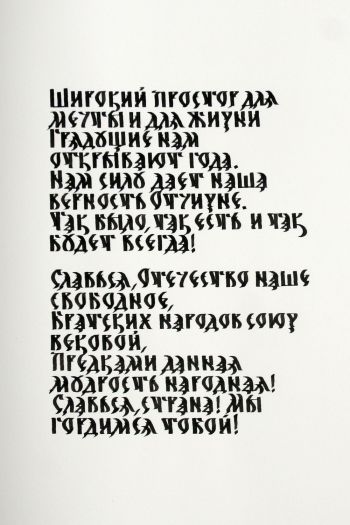|
“Russia — our sacred power, Russia — our beloved country…”. These are the words which the National Anthem of Russia begins with. However, this anthem is used at present time. Before the XVII century various church hymns and military marches were used to honor the country and the Tsar.
Molitva russkikh (The Prayer of Russians) was chosen to be the national anthem of Imperial Russia in 1833 (lyrics by Vassily Zhukovsky, musical composition by Prince Alexei Lvov). It was well received by Nicholas I who chose the song. Mikhail Glinka, Director of the Chapel Folk, suggested his variants of the national anthem: the closing ensemble from the Life for the Czar and Patriotic Song by Vassily Zhukovsky’s lyrics. However, both of them were refused.
Upon the removal of the Tsar and his family in March 1917, the Worker's Marseillaise, a modification of the French anthem La Marseillaise, the anthem of international revolutionary socialism, L'Internationale. The Internationale was used as the anthem of Soviet Russia had been used for over thirty-five years when it was succeeded by a new anthem set to music by Alexandrov and lyrics by Michalkov and El-Registan, the famous “Unbreakable Union of freeborn Republics…”. It was adopted as the official anthem of the RSFSR and USSR to be used until 1944. The new lyrics were approved and were made official with the printing of the new Soviet Constitution in 1977.
These lyrics were used until 1991, when the Soviet Union separated into fifteen nation-states. Then it was Boris Yeltsin to suggest using the Patriotic Song by Mikhail Glinka to be used as the official anthem. It had been used as such for as much as nine years. It is spectacular that throughout the entire period the music was played without lyrics despite the numerous attempts of the government and the people to propose the official anthem text.
In December 2000 the rise to power of Vladimir Putin was marked by a new change of the anthem. The melody by Alexander Alexandrov (1883-1946) performed a triumphant come-back. The lyrics were written by Sergey Mikhalkov.
The state flag, coat-of-arms and anthem are the symbols of state power. It is not a surprise that in 2009 during the G8 summit in L’Aquila Italian Prime Minister Silvio Berlusconi presented the illustrated manuscript national to the state leaders.

The commission for the national anthem execution was delegated to a famous calligrapher, participants of the International Exhibition of Calligraphy, Yevgeny Drobyazin. The artist has developed a unique font based on the Slavic alphabet. As soon as possible the text was written and forwarded to Marilena Ferrari-FMR publishing house in Rome, the world-famous manufacturer of exclusive gifts for VIP-persons. According to Yevgeny Drobyazin, the artist’s work usually does not stand haste and bustle. However, his publishing experience helped him execute the text in two weeks time throughout which the concentration of the artist's attention was so high that he, by his own confession, noticed nothing around him. The text was illuminated by Barbara Calzolari, the Italian painter, calligrapher and artist, known worldwide for her unique works for the outstanding political and religious figures and His Holiness Pope Benedict XVI. Recently Mrs. Calzolari has honored our project to become its new participant.


The calligraphic text of the national anthem was presented by Silvio Berlusconi to President of Russia Dmitry Medvedev on July 10, 2009.
A copy of the manuscript anthem of Russia can be seen among other works by Mr. Drobyazin at the II International Exhibition of Calligraphy, which will be held in Moscow from October 14 till November 14, 2009.
One more participant of our project, Vitaliy Shapovalov, also donated his script version of the anthem to the Contemporary Museum of Calligraphy. If the work by Yevgeny Drobyazin features the laconic forms and low-key style (the anthem was intended to be presented to a high-ranking individual), the work by Mr. Shapovalov is aсtually a picture with thin delicate lines of text executed in pastel colors of the Russian flag.
|

